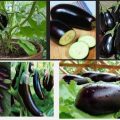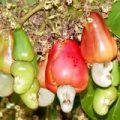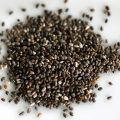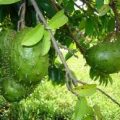Celery is a native to the Mediterranean and adjacent areas. The plant is strong smelling biennial. The thick petioles, curved in cross-section, are long and grooved on the external surface. The stems bearing the compound leaflets are attached to the apex of the long petiole at a point often called the joint. The flowers are very small, white and borne in compound umbels in the leaves of the branched seed stalks which maybe 60 to 90 cm in height.
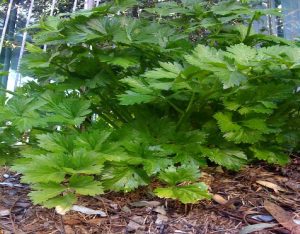
As a salad crop, celery ranks next to lettuce. Like lettuce, celery has been growing in importance and popularity for the last two decades. Salads have become increasingly common on the menus of most Filipinos, and the supply of this important crop has to keep pace with the ever-growing demand. The only known areas producing the crop are Baguio, Trinidad in Benguet and to some extent, in Davao and Nueva Vizcaya.
Celery Varieties
Elne– Foliage are tall, dark and green. The white stalk are thick, smooth and fleshy. Can be harvested 2 to 3 months from transplanting.
Tall Utah– Foliage are sturdy, dark green with long, thick, smooth stalk.
ADAPTATION
Climatic and Soil Requirement
Celery is distinctly a cool season crop. Large, tender petioles are produced at relatively cool temperature. A monthly mean temperature is considered ideal for the production of good quality and quantity celery crops. Celery is successfully grown in soils that are either muck or peat. Sandy loam soil well-supplied with organic matter is also preferred. Acidic soils are normally avoided. The pH range of soils considered ideal for the production of celery is from 6.0-6.8.
Elevation
Stalk celery production is limited to the higher elevation but soup celery can be grown at close to sea level.
Months of Planting
Celery can be planted year round but quality crops are planted from January through April.
Nutritional Requirements
A crop of celery from a hectare of land would be able to absorb from the soil 313.6 kg nitrogen, 80.6 kg phosphorus, 711.2 kg potassium, 295.7 kg of calcium and 39.2 kg of magnesium. Essentially, in view of the restricted root system of celery, an abundant supply of nutrients must be available in the root zone during the last month or before the expected time of harvesting.
CULTURAL REQUIREMENTS
Seed bedding and care of seedlings
To induce quick germination of the seeds, they should be soaked overnight in water. Sowing maybe done early the following morning. As the seed is slow to germinate, soil moisture in the beds should be kept close to field capacity. Pieces of moistened burlap can be spread over the area in which seeds have been sown thinly at a very shallow depth. This aids in preventing washing out of seeds during the watering and also keeps the soil from dying out rapidly.
Since the celery plant grows rather very slowly during the seedling stage, care must be taken to keep the weeds on the beds under control. These weeds compete seriously with the seedlings for the uptake of nutrients available in the soil. It takes from two to three months for the seedlings to reach a suitable size for transplanting in the field.
Transplanting and Spacing
When the seedlings have attained the height of about 15 cm., they are transplanted in the open field. Beds about 1m. wide are prepared in the field. The usual size is 1m. wide and 15cm high in the dry season and 30 cm in the rainy season. It is quiet common in Trinidad Valley in Benguet Province to make the beds 90 cm. wide with a 30 cm. high furrow between the beds. Two rows of plants are then set on the bed. The rows are about 40 cm. apart and plants are spaced about 20 cm. on the row. It is necessary to prune the seedlings before transplanting them to the field. Recovery from the effects of transplanting would be more rapid with the plants which receives less pruning of the tops or roots. Efforts must be exerted to select only those seedlings of good size for transplanting. Discard small seedlings.
Cultivation and Irrigation
Cultivation must be confined almost to the surface, scraping the soil in order to avoid injury to the roots which are within the 15 to 30 cm. zone from the base of the plants. Thus, mulching the surface of the beds between the rows with either well-dried grasses or rice straw helps prevent evaporation of moisture from the soil and smothers the weeds. Frequent irrigation is very important. Lack of water can cause serious losses in crop yield and quality.
Fertilizer Application
In Baguio and La Trinidad Valley in Benguet, it is customary to mix 100 sacks of chicken manure or compost with 250 kg or 14-14-14 or other complete fertilizer per hectare of beds before transplanting. This is followed with sidedressing from 100-150 kg of ammonium sulfate at 10 to 15 days intervals.
Sidedressing is applied in solution along the rows at the rate of 100-150 grams of fertilizer in 5 gal. of water.
CONTROL OF PESTS AND DISEASES
Pests and their Control
Cutworm, aphids, and mites are few insects that attack celery.
• Aphids,(Aphis sp.) These are small greenish insects, which are either winged or wingless. They reproduce very rapidly. The insects sucks the sap from the leaves causing curling, distortion and stunting of the plant.
Control
Diazinon and Malathion at concentrations recommended by the manufacturers are examples of effective insecticides.
• Cutworms,(Prodenia litura Fabricius). The larva of the insect is a brown worm about 5 cm long. The adult is dark-pale brown and its outer wings have transverse light brown bands. It is about 2 cm. long. The eggs are laid on the lower surface of the leaves in a mass of several hundreds and covered with matted hairs. During the day, the worms hide in the soil where they pupate. At night they come out to feed on succulent leaves and stems.
Control
The soil surface along the plant row can be treated chlorinated hydrocarbons such as Aldrin, Dieldrin, etc. at concentrations recommended by the manufacturer.
• Mites (Tetranychus truncatus Ebara) These are tiny pests difficult to see with the naked eye. They cause stippling and wattling of leaves.
Control
Spray with either Tedion V-8, Diazinon, Kelthane or Chlorobezylate at concentrations recommended by the manufacturers.
Diseases and their Control
Celery is susceptible to several diseases, which are of real concern to the producer of this market crop.
• Blight –There are three distinct blights infecting celery, but since they are all controlled by the same means, it is well to discuss them together. Late blight (Septoria apii) is characterized by the small, brown, circular lesions on the leaves and stems. Black fruiting bodies of the fungus later appear in these areas. In the case of early blight Ceriopora apii, dead, ashen-gray velvety areas develop in the foliage. The bacteria (Bacterium apii) produce lesions that are more reddish brown that those cause by late blight, in addition to a yellow halo. No black fruiting bodies are to be seen in celery infested by bacterial blight. Plants can be affected by these diseases at any time during their life span.
Control
Control by cultural methods and fungicides spray in similar for each of the blights mentioned. The organism causing both late and early blight can survive on plant refuse in the soil so two to three rotations are desirable. These fungi can also survive in the seed. Two to three old seeds are recommended for planting because at this stage the fungi are no longer viable. New seeds can be soaked in hot water at a temperature of 48oC for 30 minutes to kill the seedborne fungi. Then the seeds are dried and treated with Thiram dust before planting. Spray application should start in the seedbed and repeated every 7 to 10 days until harvest. Dithane, Zineb, and Nabam plus Zinc sulfate are effective materials. Label directions should be followed religiously.
• Damping-off of seedlings –The most common soilborne organisms causing this disease are: Pythium debaryanum Hesse, Rhizoctonia solani Khun and scelrotium rolfs Sacc-all fungi. Seeds infected with the disease may either decay before they germinate; sprouts are killed before they reach the soil surface, or seedlings may develop lesions near the soil level and fall over.
Control
Disinfecting of the soil in the seedbed or seedboxes is usually desirable. Watering the beds in the day so that the soil surface will be dry at night will help reduce infection. Seeds can be placed in the cloth sack and soaked until moistened in a solution of 1 oz. of Calomel (mercury chloride) in 1 gal. of water. Another method is to coat the seed thoroughly with either Captan, Chlonil or Thiram dust at the rate recommended by the manufacturer. Such treatment should be used on hot water-treated seed.
• Bacterial Rot – is caused by a bacterium, Erwinia carotovora Holland. Small lesions appear on the fleshy petioles and rapidly enlarge. Finally, a soft, mushy rot develops.
There is no specific stage of maturity at which celery must be harvested. If cut too early in the season, the yield would greatly be reduced. However, celery can be cut when a little over-mature, but not too late as to allow the petioles from becoming pithy, in which case, they lose their high quality.
In harvesting celery, the plants are cut below the soil surface with a large knife before leaving the petioles attached to the base. Tiller or suckers, short and prongy outside the petiole, and diseased or injured leaves are cut off before they are packed in convenient containers.
Source: Department of Agriculture
Regional Field Office No. 2
Tuguegarao City, Cagayan
Produced By:
High Value Crops Development Program (HVCDP)
Contact No. (078) 846-3379
Agricultural Communication (AGCOM) Section
Contact No.: (078) 304-0562
Email Address: da_agcom@yahoo.com /
darfu02_agcom@yahoo.com

